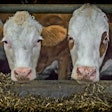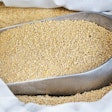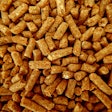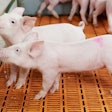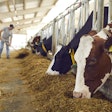
U.S. Secretary of Agriculture Sonny Perdue addressed a packed room during the Poultry Market Intelligence Forum, held during the 2018 International Production & Processing Expo. Secretary Perdue described the domestic poultry industry is a “powerhouse,” as demonstrated by the annual International Production & Processing Expo. During his address, he spoke about topics that included infrastructure, tax reform, biosecurity, regulation, trade and collaboration. Secretary Perdue commented that he liked the creativity and innovation of the poultry industry and thanked universities, research teams and APHIS, as they are partners in the process to help the poultry industry be more productive and profitable. “Work must be based on sound science and not on political decisions,” stated Secretary Perdue.
Secretary Perdue concluded by mentioning that “the goal of USDA is to be the Amazon of the federal service,” and USDA wishes to partner with the industry to address burdensome regulations.
“In 2018, the poultry industry is still going to be very strong and vibrant,” forecasted Mike Donohue, vice president at Agri Stats, during his presentation on the “Eight Trends That Drove the Chicken Industry in 2017.” Donohue reviewed the trends, which include the following areas: growth of no antibiotics ever (NAE) / antibiotic-free (ABF) / vegetable fed diets; stability in feed ingredient costs; chick cost and housing expenses; ‘slow growing chickens’ and GAP; bird size and yields; labor costs and availability; NPIS; and wing demand and value. He also remarked that the further processing industry has continued to grow, as more consumers are spending their food dollars outside of the home due to convenience. Donohue expressed that there is a phenomenal change in this business.
Dr. Paul Aho, economist, Poultry Perspectives, gave an overview of “Domestic and Global Drivers for 2018.” Aho began his overview by pronouncing that “the state of the chicken is good, and the economy is good; so there is not very much to complain about regarding the state of the industry. The whole world is growing simultaneously.” He continued by commenting that “oil countries are poultry importing countries and have plenty of money to buy chicken; and the price per barrel of oil is going up. In two years oil has gone up 100 percent. Copper and the Dow Jones are also up by 50 percent. Can grain be far behind?”
Aho stated that China recently declared they will be putting 10 percent of ethanol in their gasoline by 2020, so this will increase grain demand worldwide. China now has a great percentage of the world corn stock. If the stock goes up, the prices will go down; and if stock goes down, the price will go up. Grain prices can also increase due to demand from the rising world economy as well as a result of drought, which is very difficult to forecast. By 2020, China is expected to consume a big part of the world grain stock, and the average farm price for corn is forecast to continue increasing.
Aho observed that chicken consumption is recovering from the recession. It declined due to lower median income and higher prices of corn; therefore, there was a decline in foodservice. The actual situation in the U.S., for the moment, reflects grain prices that are low and a rise in total meat production, which is consistent with economic growth. “The U.S. is not becoming vegetarian. As soon as people have money in their pocket, they start buying more meat. We can see where we are in the economic cycle by watching meat and poultry consumption,” expressed Aho. A 4 percent increase is forecasted for pork meat, and a 5 percent for beef for 2018.
Aho summarized by affirming that corn and soybeans are at the bottom of the cycle, commodities of all kinds are climbing, and grain prices are likely to rise as will feed prices. The economic growth in the U.S. supports chicken expansion. Turkey profitability should improve during the year, and egg industry profits will be higher.








